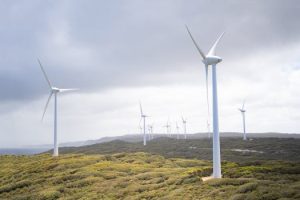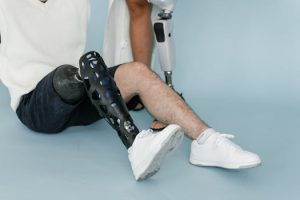Ecosystem Monitoring Wearable Sensors: Advanced Environmental Tracking Technologies
In today’s rapidly changing world, environmental monitoring has become a critical aspect of sustainable development. With the rise in global temperatures, the increase in natural disasters, and the depletion of natural resources, it has become crucial to closely monitor the health of our planet. This is where advanced environmental tracking technologies, such as ecosystem monitoring wearable sensors, come in. These state-of-the-art devices offer a non-intrusive and efficient way to gather real-time data on ecosystems. In this article, we will take a closer look at ecosystem monitoring wearable sensors and how they are revolutionizing the field of environmental tracking.
The Need for Advanced Environmental Tracking Technologies
The impact of human activities on the environment has become a major concern in recent years. From pollution to deforestation, our actions have significantly altered the balance of our ecosystems. This has resulted in catastrophic consequences such as the loss of biodiversity, soil erosion, and water pollution. To address these issues, accurate and timely monitoring of environmental conditions is crucial.
Traditional methods of environmental monitoring, such as satellite imagery and ground-based observations, have limitations in terms of coverage, accuracy, and cost. This is where advanced tracking technologies, particularly ecosystem monitoring wearable sensors, have a significant advantage.
What are Ecosystem Monitoring Wearable Sensors?
Ecosystem monitoring wearable sensors are small, lightweight devices that are designed to collect data on a variety of environmental parameters. These sensors are typically attached to plants, animals, or even humans and can measure factors such as temperature, humidity, air and water quality, light, and sound levels.
One of the main advantages of ecosystem monitoring wearable sensors is their ability to provide real-time data. Unlike traditional methods, which can take days or weeks to gather and analyze data, these sensors can provide instant results. This allows researchers and environmentalists to respond quickly to changes in the ecosystem and take necessary actions to preserve its health.
The Functioning of Ecosystem Monitoring Wearable Sensors
Ecosystem monitoring wearable sensors are equipped with various types of sensors, depending on the parameters they are designed to measure. For example, a device used to monitor air quality would have sensors for measuring the levels of carbon monoxide, nitrogen dioxide, and particulate matter. These sensors collect data and transmit it wirelessly to a central database, where it can be analyzed and visualized.
In addition to data collection, these sensors can also be programmed to trigger alerts when specific thresholds are reached. For instance, a sensor attached to a plant can trigger an alarm when the soil moisture levels are too low, indicating the need for irrigation.
The Benefits of Ecosystem Monitoring Wearable Sensors
1. Non-Intrusive Monitoring
Ecosystem monitoring wearable sensors provide a non-intrusive way to collect data from various environments. Traditional methods, such as manually collecting samples or using drones, can disrupt the ecosystem and alter the data being collected. Wearable sensors, on the other hand, can provide accurate data without causing any disturbance.
2. Cost-Effective
Compared to traditional monitoring methods, ecosystem monitoring wearable sensors are relatively inexpensive. They do not require expensive equipment or specialized training to operate. This makes them accessible to a wider range of researchers and organizations, facilitating greater participation in environmental monitoring.
3. Real-time Tracking
Real-time tracking is perhaps the most significant advantage of ecosystem monitoring wearable sensors. The instant data they provide allows for quick decision-making and timely interventions in case of any changes in the ecosystem. This can help prevent further damage and promote the restoration of affected areas.
The Future of Ecosystem Monitoring Wearable Sensors
As technology continues to advance, so will the capabilities of ecosystem monitoring wearable sensors. We can expect to see more sophisticated and accurate sensors being developed, allowing for a deeper understanding of ecosystems. The integration of artificial intelligence and machine learning can also enhance the capabilities of these devices, making them more efficient and automating the data analysis process.
In conclusion, ecosystem monitoring wearable sensors are at the forefront of environmental tracking technologies. They provide a cost-effective, non-intrusive, and real-time method of collecting data, making them invaluable tools for preserving the health of our planet. With ongoing advancements and applications, these sensors have the potential to greatly impact our efforts towards sustainable development.











